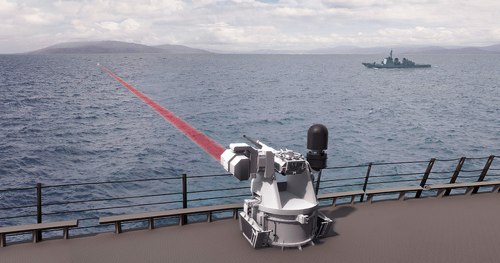Technological advancement moves in strange ways. It’s often the technologies that come from just outside our mainstream field of vision that change things the most radically.
The properties of semiconductors were well known decades before anybody thought they’d be a great way to shrink vacuum tubes into transistors and then microchips. The implications of a really big network where everybody you know is plugged into it with PCs and mobile devices was a hard concept for anybody to fathom.
I’d like to tell you about a technology on the horizon that could be bigger than anything else we’ve seen before and make possible all sorts of crazy things like Doctor Who-like Tardis boxes that are bigger on the inside, matter replicators and line-of-sight teleportation.
It’s a technology that’s already been proven in small forms in the laboratories and now faces the challenge of finding out if it can scale without ridiculous amounts of energy.
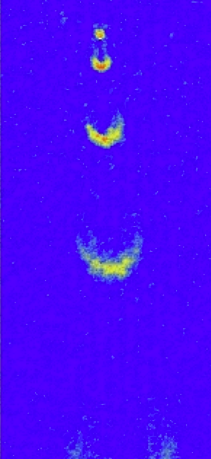
The concept began with a theory by Satyendra Nath Bose and Albert Einstein about what happens when matter gets really, really cold. Quantum physics informs us that we can never know the precise position and velocity of a particle. This means the more you know about one, the less you can know about the other. If you slowed down a particle enough and looked at it under some special microscope it would look like a blur. The act of slowing it down means that its exact position has to become literally fuzzy.
In laboratories we can see this fuzziness by creating a Bose-Einstein condensate; a bucket of atoms supercooled to the point that they behave like one uber-atom and quantum effects are magnified. One of the cool applications of this is the atom laser (it’s called a laser even though it’s not made of light).
An atom laser works by using a Bose-Einstein condensate to cool a group of atoms and then using a technique like magnetic fields or an actual laser to propagate (emit) the matter in some kind of beam. In the image you can see what a beam of sodium atoms looks like when emitted from a magnetic trap.
The potential for this is immense. It’s very much in its infancy and hard to tell what will actually become of it, but when you can reliably get matter to behave like light, amazing things are possible.
An awesome particle beam
You could use this to create an incredibly powerful particle beam that would be even more precise than a laser and create smaller microprocessor components and be used to etch out things like nano-scale devices out of solid matter.
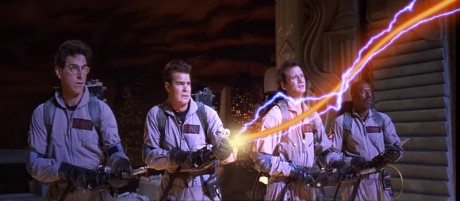
Tardis boxes
The fact that you can change matter’s position to such an indeterminate state means that you could theoretically have two particles in the same space. This could allow for matter compression where you could squeeze a large amount of matter into a confined area. Like Doctor Who’s Tardis, this would give a box that’s bigger on the inside than it is on the outside. Keeping molecules and complex structures from falling apart would be very big challenge however.
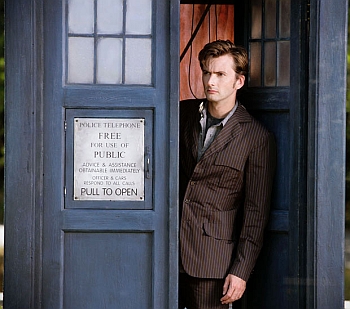
Teleportation
The ability of a matter laser to “project” beams of atoms means that a form of line-of-sight teleportation is theoretically possible. The image of the atom laser above shows a kind of crude form of that. If you could contain the beam over long distances through some other means or use a matter equivalent of a fiber optic cable, you could shoot atoms at near the speed of light from one point to another. At the receiving end the atoms are returned to a high temperature and reassembled, er somehow (see below).
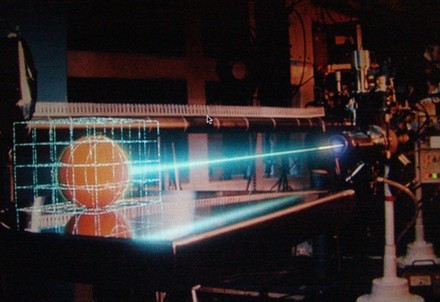
Matter replicator
A Bose-Einstein condensate also makes interesting chemistry possible. You can cool down two different types of atoms and merge them to create molecules. You could theoretically do the same with an atom laser. Crossing beams could be used to create molecules and maybe even assemble more complex structures and build things out of scratch like the matter replicators on Star Trek.
It’s anybodies guess how far off any of these things are or even if they’ll ever happen in a way that makes it into day to day use. The biggest complications are often the unseen ones after you’ve proven what you thought was the most difficult part. That said, when the first laser was fired off in a laboratory, people could think of only a few applications for what was at that time an unwieldy technology. Decades later we can mass produce lasers for pennies apiece and use them in everything from Blue Ray players, to satellites to key chain toys.
http://en.wikipedia.org/wiki/Atom_laser
http://cua.mit.edu/ketterle_group/Animation_folder/Atom_laser.htm

